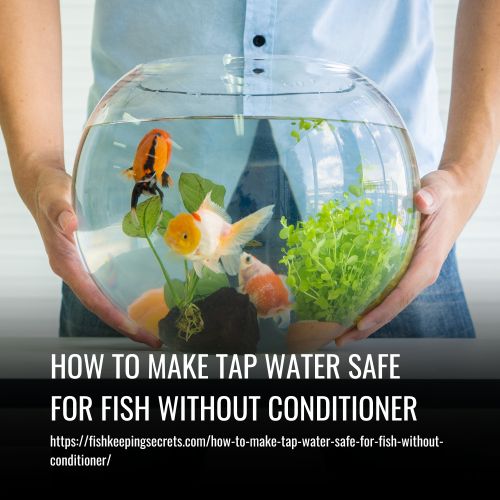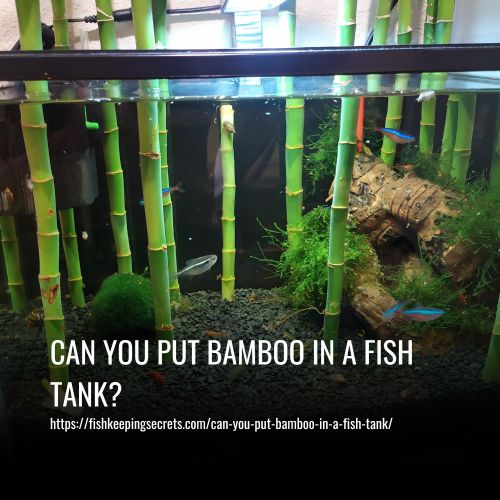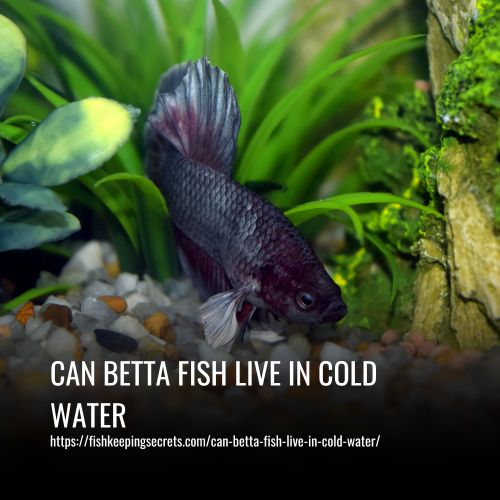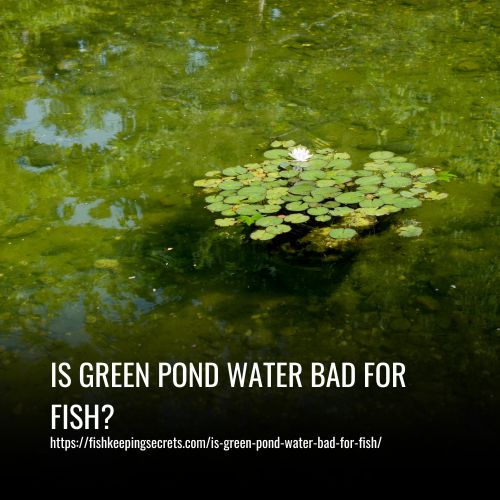Many fish owners are concerned about the chemicals and additives in tap water and want to find a way to make it safe for their fish without using a conditioner. While water conditioners are effective, some people may want a more natural or DIY approach.
To make tap water safe for fish without conditioner, follow these steps:
- Letting the Water Age
- Aeration
- Activated Carbon
- Reverse Osmosis
- Ultraviolet Light
- Vitamin C
- Boil & Cool

How To Make Tap Water Safe For Fish Without Conditioner
Here are some methods that can help to Make Tap Water Safe:
1. Letting the Water Age
Aged tap water is a mix of science and myth. For many years, aquarium enthusiasts believed that the aging process changed the water in a way that made it more “friendly” for their fish. In reality, if the tap water being used was treated with chlorine, allowing it to sit for a few days or weeks could give the chlorine time to dissipate from the water.
This is because enough time will cause chlorine to evaporate from standing water. It is important to remember that although this may be beneficial for some types of fish, other fish may not find aged tap water suitable for their needs. Ultimately, it’s up to you to decide what kind of water is best for your fish and their environment.
2. Aeration
Aerating tap water is a great way to remove chlorine and make it safe for fish. However, if your tap water contains chloramine the process of aeration will not work. Chloramine is a molecule that resists aeration and will remain in the water even after aerating or aging.
Copper and other heavy metals remain in the water regardless of aeration or aging. For these reasons, it is important to consider having your tap water tested before adding it to your aquarium to ensure it is safe for your fish.
3. Activated Carbon
It is important to use an aquarium filter that can effectively remove chlorine and other harmful chemicals from the water. One way to do this is by using an activated carbon filter. Activated carbon is composed of tiny particles that will absorb toxins when water flows through them. This process, called dechlorination, neutralizes the chlorine disinfectants in the water and removes chloramine as well as other heavy metals.
Activated carbon filters are available in two varieties: one with a granular layer of carbon and the other with a carbon block. Both are effective, but the block type is often more expensive. When using these filters, an air pump will also be needed to force the water through the filter for filtration to occur.
By utilizing an activated carbon filter in your fish tank, you can ensure a clean, safe environment for your aquatic pets. Be sure to research different types of filters that may be suitable for your particular aquarium setup before making any purchases.
4. Reverse Osmosis
Reverse osmosis is a popular technique for filtering aquatic life forms’ water. This system works by pushing water across a semi-permeable membrane, leaving the impurities behind. RO filters can eliminate chlorine and other heavy metal nutrients such as nitrate and phosphate from tap water, making them ideal for aquarists looking to keep their tanks clean and free of unwanted contaminants.
In addition, these systems can also remove salt and minerals from the water so that you can customize the hardness and pH level to what works best for your fish. However, it may take a longer period of time to make the water chlorine-free through RO treatment, and excessive chlorine concentrations may damage the system components which can be costly to repair or replace.
5. Ultraviolet Light
Using a UV lamp to dechlorinate your aquarium water is a good method for removing chlorine and other contaminants from the water. This process occurs when the sun’s UV rays interact with chlorine in the water. It is recommended to leave your aquarium water in a container for 24 hours before adding a UV lamp for maximum benefit. The interaction of chlorine and UV rays will create a nontoxic salt that does not affect the fish in your tank.
UV neutralization is effective at neutralizing chlorine, but it is less effective at neutralizing chloramine and requires a special type of UV light for this purpose. Furthermore, it requires a powerful UV fixture and long contact time with the water, which makes it more suitable for industrial operations than home aquariums. Therefore, if you wish to use a UV light to dechlorinate your aquarium water, it is best to consult an expert who can advise you on the best and safest option.
6. Vitamin C
Vitamin C (ascorbic acid) is a powerful chemical that can be used to reduce the chlorine content in drinking water and aquariums. By using vitamin C supplements, or products containing ascorbic acid, you can neutralize chlorine and chloramine from the tank, eliminating any dangerous bacteria and parasites present in the water.
Before adding these supplements to your aquarium, it is important to make sure you purchase them from a reputable pet store for safe and effective use. Additionally, always observe your fish closely after introducing these supplements to ensure their safety and well-being.
7. Boil & Cool
Boiling water is an effective and simple way to make it suitable for aquarium fish. Boiling the water will aerate it, leaving air bubbles in it, as well as helping evaporate chlorine from the water. It usually takes around 20 minutes of boiling to dechlorinate or make the water safe for your fish.
After boiling, it is important to give the water time to cool down thoroughly before introducing your fish, in order to avoid any harm coming to them. Boiling tap water also eliminates its chloramine content and makes the water healthy for your fish without using chemicals or other methods. Boiling is a cheap and quick way to prep water for your tank and make it suitable for your fish’s livelihood.
Can You Fill Your Tank With Tap Water
It is possible to use tap water to fill your aquarium, but it is crucial to remove any chlorine present in the water beforehand. Tap water typically contains chlorine, which can be harmful to your fish and potentially result in severe health issues or even death. Therefore, it is essential to take the necessary steps to make tap water safe for your fish before adding it to your aquarium.
Why Should You Make Tap Water Safe for Fish
It is crucial to make tap water safe for fish to ensure their health and well-being. Here are the reasons why:
1. Chlorine is Harmful to Fish
Tap water often contains chlorine, which is a disinfectant used to treat public water supplies. However, chlorine is toxic to fish and can harm their respiratory system. If fish are placed directly into chlorinated water, they may suffer from respiratory problems and suffocation, leading to death. Chlorine can also burn the sensitive gills and skin of fish, causing further harm.
2. Stressful Environment
Even if the concentration of chlorine in the water is not immediately lethal to fish, it can still cause stress and discomfort. Fish in chlorinated water may exhibit erratic swimming patterns, gasping for air, and overall distress. It is important to create a safe and comfortable environment for fish to thrive.
3. Dechlorinating Tap Water
To make tap water safe for fish, it is recommended to dechlorinate the water before introducing fish to it. There are various methods to dechlorinate tap water, such as using water conditioners specifically designed for this purpose. These conditioners neutralize chlorine and other harmful chemicals in the water, making it suitable for fish. However, some hobbyists prefer alternative, chemical-free methods to dechlorinate tap water.
Ensuring the well-being of your fish by making tap water safe is essential for their health and longevity.
What Do Water Conditioners Do
Water conditioners facilitate the neutralization of chlorine disinfectants, allowing one to add water to the tank right away. Additionally, some water conditioners contain a chemical that detoxifies heavy metals. This chemical wraps itself around the metal, making it non-reactive and protecting aquatic life from heavy metal poisoning.
It is essential to read the label and find a product that meets your specific needs for your tank. Be sure to follow all instructions closely when using any type of aquarium water conditioner.
FAQs
Yes, it is necessary to condition tap water for fish. Tap water is treated with chemicals like ammonia and chlorine, which are harmful to fish. Before adding tap water to an aquarium, it should be treated with an aquarium water conditioner to remove these chemicals. It is also important to regularly check the health of fish and replace filter cartridges to ensure the water is not harming them.
Ensure the water for your fish tank is free of chlorine and chloramine. These chemicals are usually found in tap water and can be harmful to your fish’s health if not removed. Chlorine and chloramine can damage the gills, skin, and other body parts of the fish, leading to serious illness or even death. To protect your fish from these dangerous chemicals, it is essential to use a water filter or conditioner before introducing new water into the tank. Additionally, regular water changes are necessary to maintain good water quality and keep your fish healthy.
Yes, you can add bottled water to your fish tank, but there are a few things to consider. Bottled water may contain excess minerals that can be harmful to fish, and it may have gone through filters that removed important components. It’s important to test the water and make any necessary adjustments before adding it to your tank. Additionally, you should remove any high levels of chlorine that may be present in bottled water before using it in your aquarium.
Fish can survive in tap water for a period of time, but it may not be the best option for them. Tap water contains minerals such as calcium, sulfates, magnesium, and carbonates which can affect the pH levels in the aquarium. It is important to carefully handle tap water before using it in an aquarium to ensure the health and well-being of the fish.
Chlorine in tap water can be harmful to fish. It kills living cells in the fish and can damage their gills and skin. It attacks the fish from all angles and can cause damage to their entire body. It is important to treat tap water before adding it to a fish tank to remove chlorine and make it safe for the fish.
Heavy metals in tap water can have negative effects on fish. The heavy metals can accumulate in the organs and tissues of the fish, which can lead to developmental issues and health problems. This can shorten the lifespan of the fish and make them more susceptible to illnesses caused by metal poisoning.
Conclusion
In conclusion, it is possible to make tap water safe for fish without using a conditioner. By understanding the factors that make tap water unsafe for fish, such as chlorine and chloramine, and taking the necessary steps to neutralize or remove these substances, fish can thrive in a tank with treated tap water.
Whether using a dechlorinator, aging the water, or using natural methods like peat moss or Indian almond leaves, there are several options available to ensure the safety of the water for fish. It is important to test the water regularly and monitor the well-being of the fish to ensure that the water treatment methods are effective.
By providing a safe and healthy environment for fish, without the use of chemicals, fish owners can enjoy their hobby while promoting the well-being of their aquatic pets.



